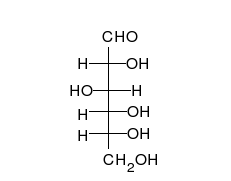Glycogen storage disease type IX on:
[Wikipedia]
[Google]
[Amazon]
Glycogen storage disease type IX is a hereditary deficiency of glycogen phosphorylase kinase B that affects the
 The diagnosis of glycogen storage disease IX consists of the following:
*
The diagnosis of glycogen storage disease IX consists of the following:
*
 The management of Glycogen storage disease IX requires treatment of symptoms by frequent intake of complex carbohydrates and protein to combat the low blood sugar. A nutritionist will advise on suitable diets. Liver function is regularly monitored and problems managed as they arise. However, liver problems have only been successfully treated by a transplant. Routine checks of metabolism are needed to ensure blood sugar (glucose) and ketones are managed. Regular moderate exercise is beneficial, although over-vigorous exercise is to be avoided, especially in those with enlarged livers.
The management of Glycogen storage disease IX requires treatment of symptoms by frequent intake of complex carbohydrates and protein to combat the low blood sugar. A nutritionist will advise on suitable diets. Liver function is regularly monitored and problems managed as they arise. However, liver problems have only been successfully treated by a transplant. Routine checks of metabolism are needed to ensure blood sugar (glucose) and ketones are managed. Regular moderate exercise is beneficial, although over-vigorous exercise is to be avoided, especially in those with enlarged livers.
liver
The liver is a major organ only found in vertebrates which performs many essential biological functions such as detoxification of the organism, and the synthesis of proteins and biochemicals necessary for digestion and growth. In humans, it ...
and skeletal muscle tissue. It is inherited in an X-linked or autosomal recessive manner. update 2011
Signs and symptoms
The signs and symptoms in glycogen storage disease type IX include: *Enlarged liver
Hepatomegaly is the condition of having an enlarged liver. It is a non-specific medical sign having many causes, which can broadly be broken down into infection, hepatic tumours, or metabolic disorder. Often, hepatomegaly will present as an abdomi ...
* Slowed growth
* Motor development delay (mild)
* Low blood sugar accompanied by ketosis
* Lack of muscle tone
Most of these signs and symptoms diminish as adulthood sets in.
Genetics
Glycogen storage disease type IX can be inherited via: *X-linked recessive
X-linked recessive inheritance is a mode of inheritance in which a mutation in a gene on the X chromosome causes the phenotype to be always expressed in males (who are necessarily homozygous for the gene mutation because they have one X and one Y ...
inheritance due to mutations at either PHKA1 or the PHKA2 (most common) gene
In biology, the word gene (from , ; "... Wilhelm Johannsen coined the word gene to describe the Mendelian units of heredity..." meaning ''generation'' or ''birth'' or ''gender'') can have several different meanings. The Mendelian gene is a b ...
* Autosomal recessive could be the inheritance pattern for an affected individual when the genes PHKB or PHKG2 have a mutation
In biology, a mutation is an alteration in the nucleic acid sequence of the genome of an organism, virus, or extrachromosomal DNA. Viral genomes contain either DNA or RNA. Mutations result from errors during DNA replication, DNA or viral repl ...
.
Diagnosis
 The diagnosis of glycogen storage disease IX consists of the following:
*
The diagnosis of glycogen storage disease IX consists of the following:
* Complete blood count
A complete blood count (CBC), also known as a full blood count (FBC), is a set of medical laboratory tests that provide information about the cells in a person's blood. The CBC indicates the counts of white blood cells, red blood cells and pl ...
* Urinalysis
Urinalysis, a portmanteau of the words ''urine'' and ''analysis'', is a panel of medical tests that includes physical (macroscopic) examination of the urine, chemical evaluation using urine test strips, and microscopic examination. Macroscopic ...
* Histological
Histology,
also known as microscopic anatomy or microanatomy, is the branch of biology which studies the microscopic anatomy of biological tissues. Histology is the microscopic counterpart to gross anatomy, which looks at larger structures vis ...
study of the liver (via biopsy)
* Genetic testing
* Physical exam
Types
There are two types of this inherited condition, ''glycogen storage disease IXa1'' and ''glycogen storage disease IXa2'' that affect the liver of an individual. Mutations in PHKA2 have been seen in individuals with glycogen storage disease IXa2.Management
 The management of Glycogen storage disease IX requires treatment of symptoms by frequent intake of complex carbohydrates and protein to combat the low blood sugar. A nutritionist will advise on suitable diets. Liver function is regularly monitored and problems managed as they arise. However, liver problems have only been successfully treated by a transplant. Routine checks of metabolism are needed to ensure blood sugar (glucose) and ketones are managed. Regular moderate exercise is beneficial, although over-vigorous exercise is to be avoided, especially in those with enlarged livers.
The management of Glycogen storage disease IX requires treatment of symptoms by frequent intake of complex carbohydrates and protein to combat the low blood sugar. A nutritionist will advise on suitable diets. Liver function is regularly monitored and problems managed as they arise. However, liver problems have only been successfully treated by a transplant. Routine checks of metabolism are needed to ensure blood sugar (glucose) and ketones are managed. Regular moderate exercise is beneficial, although over-vigorous exercise is to be avoided, especially in those with enlarged livers.
See also
* Glycogen storage diseaseReferences
Further reading
* * * *External links
* {{Carbohydrate metabolic pathology Genetic diseases and disorders